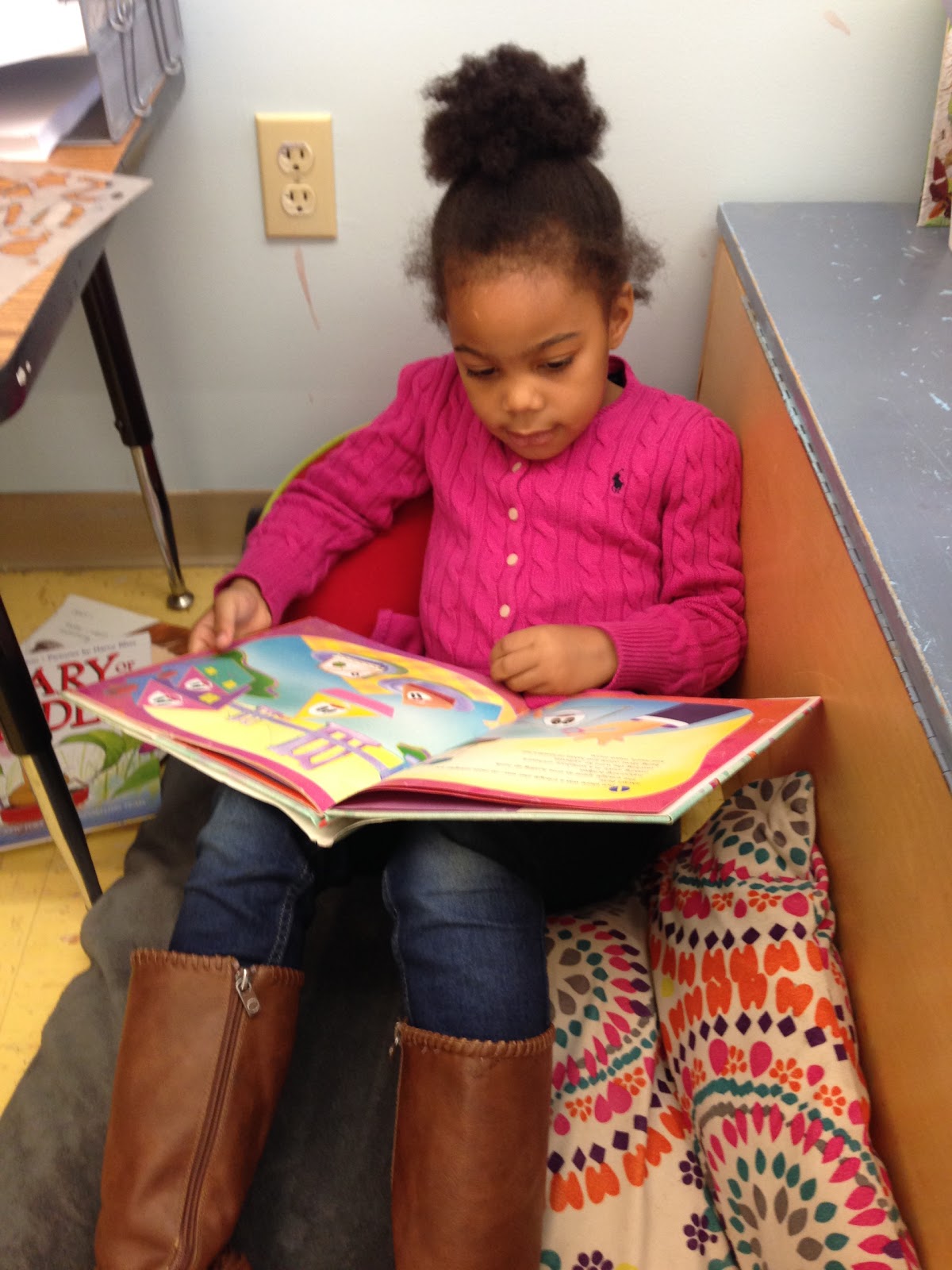Wow.....things have really been moving right along in our little K-1 community. I use the word community, because, happily, that's what we've become. Those early days of figuring out the rules, getting used to transitions, and that all important work of making friends, have led to a cohesive, settled classroom of confident, happy children. They all arrive eager to start their day, greet their friends, and get right to the work of learning and playing.
An overarching theme within our school day has been creating a community of readers. We started slowly by introducing the concept of Reading Workshop, DEAR time, and coming together for many, many read alouds. This work has payed off - we have a class of excited readers. Children who read during choice time, children who read to one another, children who talk about and borrow books from the classroom, and children who listen intently and carefully during story time.
One of my goals this year is for children to know what it is to open a good book and become lost in another world. For them to connect with books on a personal level, for them to identify with characters, and feel that an author may be speaking directly to them. I know these goals sound lofty for 5, 6, and 7 year olds, but they are not. Whether or not children are formally reading, they are still surrounded by quality literature and exposed to its beauty and magic everyday. For children, reading wonderful literature with friends in the classroom has the power to help us escape the boundaries of ourselves. We feel less alone when we understand that our pain and joy are shared. When we read
Wemberly Worried, about a mouse who is nervous about starting school, suddenly our own worries do not feel so strange or isolating. When we read
Charlotte's Web, we watch as Wilbur the pig comes to realize that "friendship is one of the most satisfying things in the world," and we apply that to our own experience in the classroom.
By reading we cross the boundaries of time and space, we read the words and live in the worlds of people from long ago, of people on faraway islands, of people that may have lives totally different from our own. Reading allows us to walk down city streets and stand in fields of wheat, live inside skin that is black, brown, or white, or see through ancient eyes or those of a child.
We need to read and talk about books in the social world of the classroom for these very personal reasons, as well as for intellectual reasons. When we teach comprehension, much of what we teach is a depth of listening, understanding, and response. Part of teaching comprehension is making a place for thoughtful and active listening. If we want children to listen to an author, won't we also want children to listen to each other, and be able to solve problems with their friends? If we want children to empathize with characters in books, won't we also want them to hear each other's ideas and perspectives, and show empathy with their classmates?
If we want children to read with wide-awake minds, then we need to invite them to use these skills in the dailiness of the classroom. Teaching reading, then, is just like teaching living.
Here are some snapshots of the children enjoying D.E.A.R. (drop everything and read) time.
Next up! Writing in the K-1 classroom.......































































































